|
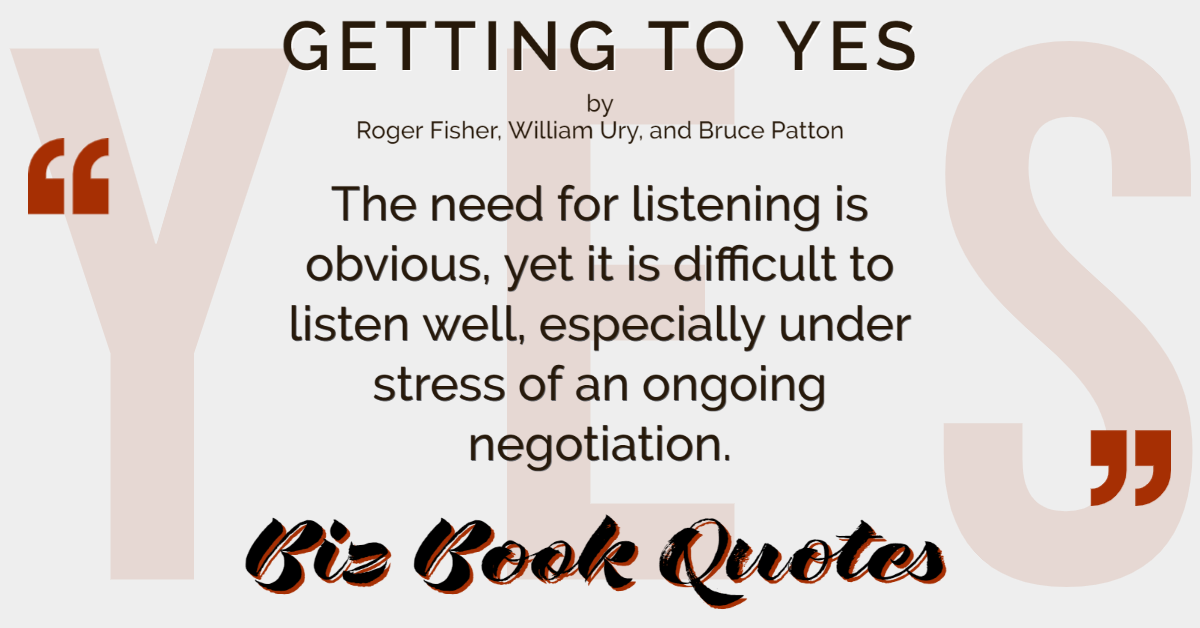
|
Getting to Yes:
The need for listening is obvious, yet it is difficult to listen well, especially under stress of an ongoing negotiation.
|
36 |
|

|
Getting to Yes:
Unless you acknowledge what [the adversary is] saying and demonstrate that you understand them, they may believe you have not heard them.
|
37 |
|
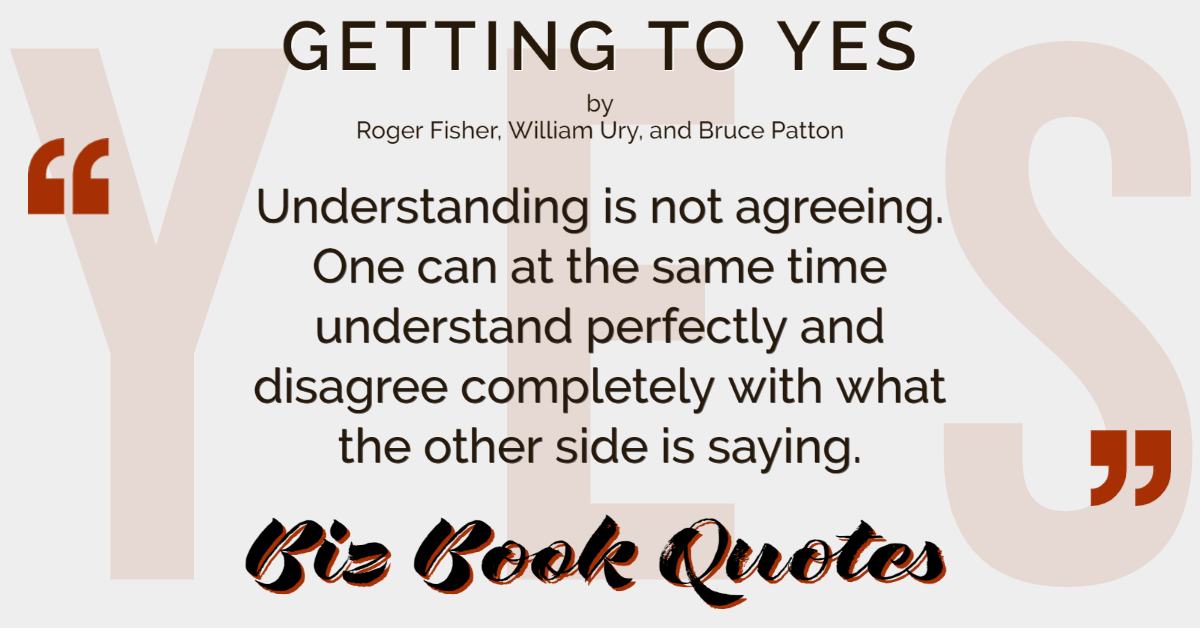
|
Getting to Yes:
Understanding is not agreeing. One can at the same time understand perfectly and disagree completely with what the other side is saying.
|
37 |
|

|
Getting to Yes:
It has been said that the cheapest concession you can make to the other side is to let them know that they have been heard.
|
37 |
|

|
Getting to Yes:
…a statement about how you feel is difficult to challenge.
|
39 |
|
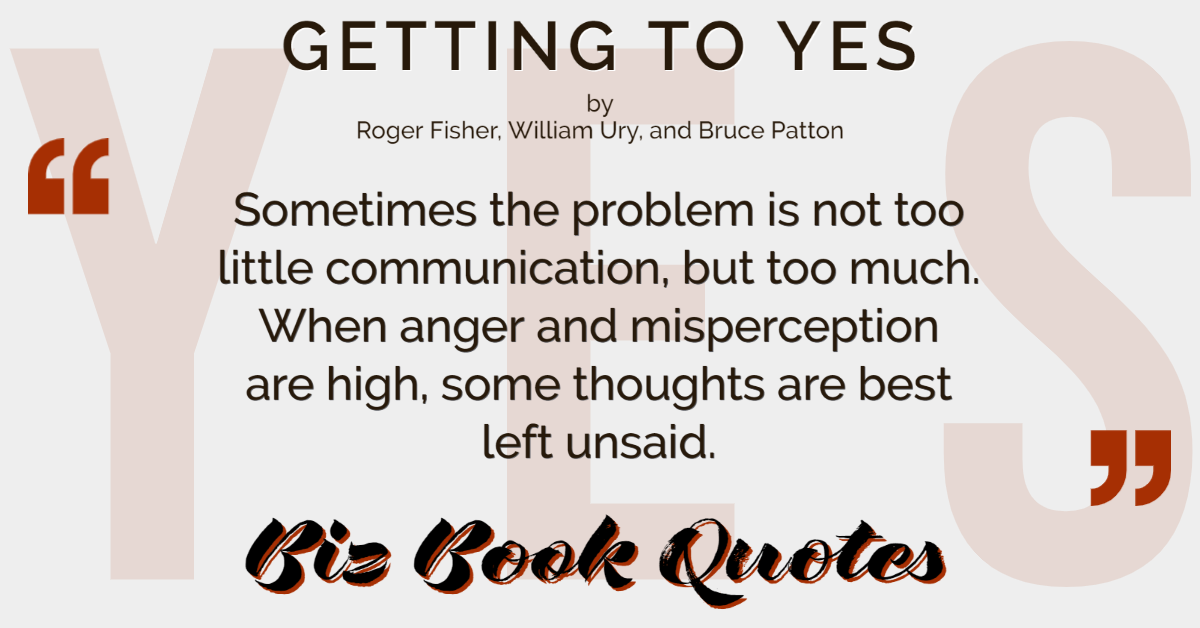
|
Getting to Yes:
Sometimes the problem is not too little communication, but too much. When anger and misperception are high, some thoughts are best left unsaid.
|
39 |
|
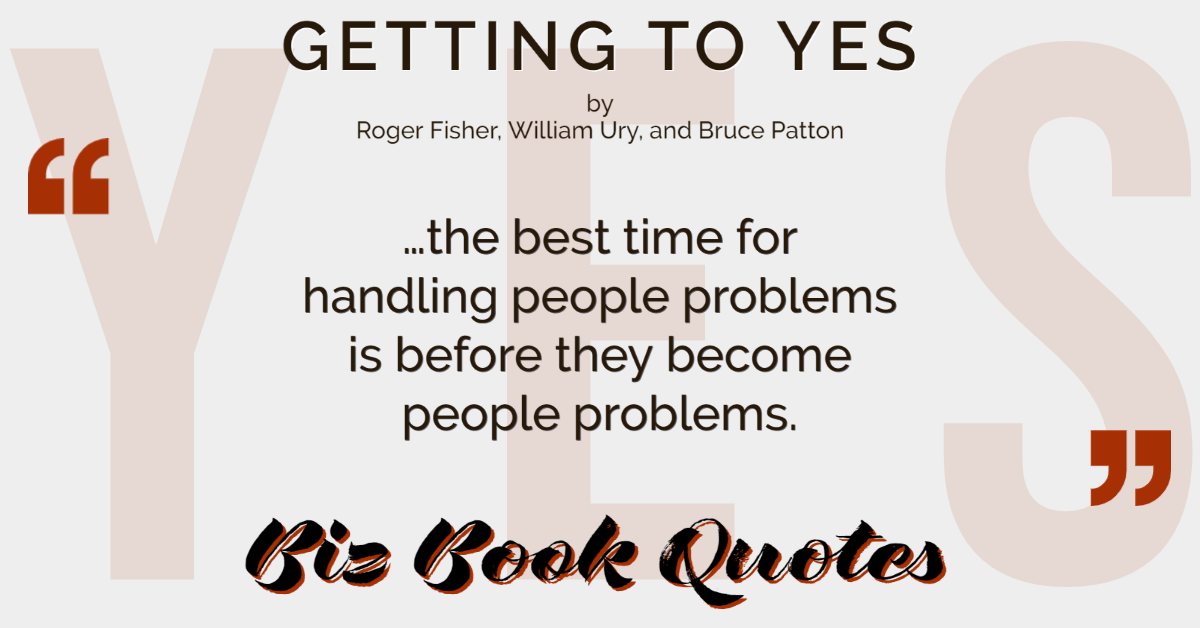
|
Getting to Yes:
…the best time for handling people problems is before they become people problems.
|
39 |
|

|
Getting to Yes:
A more effective way for the parties to think of themselves is as partners in a hardheaded, side-by-side search for a fair agreement advantageous to each.
|
40 |
|

|
Getting to Yes:
…however precarious your relationship may be, try to structure the negotiation as a side-by-side activity in which the two of you… jointly face a common task.
|
41 |
|
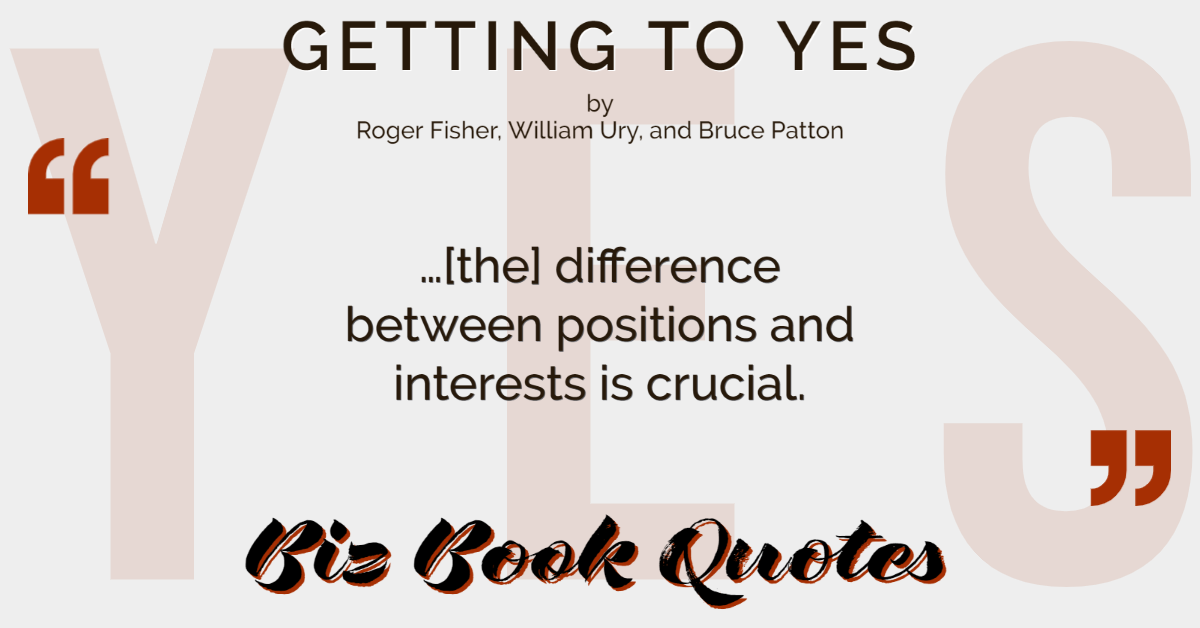
|
Getting to Yes:
…[the] difference between positions and interests is crucial.
|
42 |











